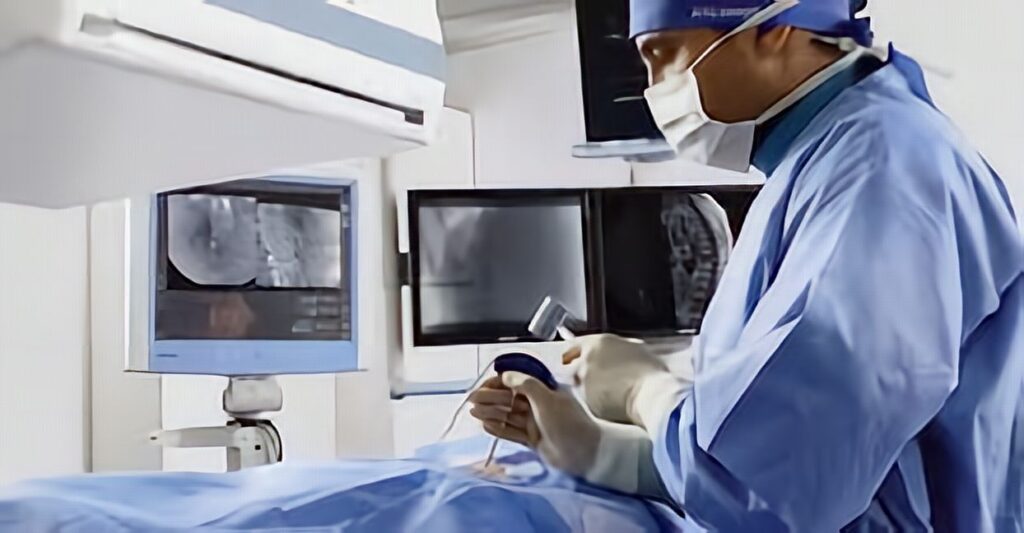Revolutionizing Pain Management: Exploring the World of RFA Treatment

Pain is an unwelcome visitor in the lives of millions, hindering daily activities and diminishing overall quality of life. Chronic pain, often associated with conditions like arthritis, back pain, and neuropathy, can be a relentless adversary. In the quest for effective pain management, a revolutionary approach has emerged in recent years: Radiofrequency Ablation (RFA) treatment. RFA is transforming the landscape of pain management, offering a minimally invasive and highly effective alternative to traditional pain relief methods.
Understanding RFA Treatment
Radiofrequency Ablation is a medical procedure that utilizes radiofrequency waves to target and disrupt the nerves responsible for transmitting pain signals to the brain. By doing so, it effectively alleviates pain without the need for medication or invasive surgeries. Unlike some conventional pain management strategies, RFA provides relief without causing systemic side effects or risking addiction to painkillers.
The Mechanism of RFA
The RFA procedure involves inserting a thin, insulated needle into the body, guided by imaging techniques like fluoroscopy or ultrasound. Once the needle is in position, a radiofrequency current is applied to create localized heat. This heat damages the specific nerves responsible for transmitting pain signals, thereby interrupting their ability to communicate with the brain. The result is a significant reduction in pain perception in the affected area.
A Minimally Invasive Approach
One of the most significant advantages of RFA treatment is its minimally invasive nature. Traditional surgeries often involve large incisions, extended recovery periods, and a higher risk of complications. In contrast, RFA is performed through tiny incisions, significantly reducing the risk of infection and minimizing scarring. Patients typically experience less pain, a shorter recovery time, and can often return to their daily activities sooner.
Versatility of RFA
RFA is not a one-size-fits-all solution but can be tailored to address a wide range of chronic pain conditions. Common applications of RFA include:
Back Pain: RFA has proven to be highly effective in treating chronic back pain caused by conditions like herniated discs or arthritis. By targeting the nerves responsible for this pain, patients often experience long-lasting relief.
Arthritis: Arthritis patients, who often endure chronic joint pain, have also found relief through RFA. This procedure can be used to target nerves in the affected joint, providing much-needed respite.
Neuropathy: Neuropathic pain can be incredibly challenging to manage, but RFA has shown promise in mitigating the discomfort associated with nerve damage.
Chronic Headaches: RFA can be employed to disrupt the pain signals associated with chronic headaches, such as occipital neuralgia.
Long-Lasting Relief
One of the most appealing aspects of RFA treatment is the durability of pain relief it provides. While medication often offers only temporary respite, RFA can provide relief that lasts anywhere from six months to a year or more. This extended period of relief allows patients to regain their independence and enjoy a better quality of life.
Low Risk of Side Effects
The side effects associated with RFA treatment are generally minimal and temporary. Patients may experience mild discomfort or bruising at the site of the procedure, but this typically resolves within a few days. Serious complications are rare, making RFA an attractive option for those seeking long-term pain management without undue risk.
The Role of RFA in the Opioid Crisis
The opioid crisis has been a major public health concern for years, with a significant portion of opioid addiction stemming from prescription pain medication. RFA offers a crucial alternative for individuals who want to avoid the risks of opioid dependency while managing their chronic pain effectively. By reducing the need for pain medication, RFA contributes to the ongoing effort to combat the opioid crisis.
The Future of Pain Management
As the medical field continues to advance, RFA treatment is poised to play an increasingly prominent role in the realm of pain management. Ongoing research is exploring the refinement of RFA techniques, expanding the range of conditions it can address, and enhancing its effectiveness. With the potential for further breakthroughs, RFA may soon become a first-line treatment option for a broader spectrum of pain-related ailments.
In conclusion, Radiofrequency Ablation treatment is a revolutionary approach to pain management that is reshaping the way chronic pain is treated. Its minimally invasive nature, long-lasting relief, low risk of side effects, and potential to reduce the reliance on opioid pain medication make it a promising option for those seeking a better quality of life. As medical science continues to unlock the potential of RFA, the future looks brighter for those suffering from chronic pain, offering hope for a life free from its grip.
